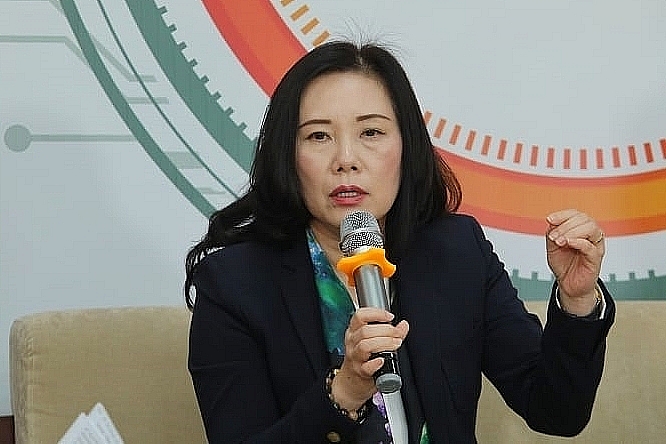VCN – Since the beginning of the year, FDI has poured into the processing and manufacturing industry which continues to occupy an overwhelming position compared to other fields. Many investors find Vietnam as a promising investment destination. However, in order to seize the opportunity well, Ms. Do Thi Thuy Huong, Vice President of the Vietnam Supporting Industries Association, said that, besides the efforts of businesses, the key is to need practical support policies come into life.
 |
| Ms. Do Thi Thuy Huong, Vice President of Vietnam Supporting Industry Association. |
Nearly seven years have passed since Decree 111/2015/ND-CP on the development of supporting industries were issued and Vietnam’s processing and manufacturing industry has made remarkable progress. Why is the added value that this industry contributes to GDP not high?
Processing and manufacturing enterprises have a modest contribution to GDP because our country is behind, so the processing and manufacturing industry contributes the lowest value in the supply chain, mainly with labor in the industry when the gray matter content is not much. In addition to the starting point, the particularity of this industry is that it requires a concentration of capital and technology. These are two weaknesses of Vietnamese enterprises, because small and medium enterprises have limited resources. That makes the capacity to develop and meet requirements in the global value chain limited.
In the past, Vietnam has negotiated and signed many Free Trade Agreements (FTAs), which are an opportunity to help the processing and manufacturing industry promote links to participate in the global supply chain?
For enterprises in general, when participating in FTAs, the tax lines will be reduced to 0-5%. However, for enterprises in the processing and manufacturing industries, especially electronic enterprises, enjoying this tax rate was available before Vietnam joined the FTA, so the impact is not large for exporting to foreign countries.
However, the positive side of Vietnam’s participation in signing many FTAs is promoting stronger and better quality FDI flows, as well as bringing better technology from Japan, the United States and Europe to Vietnam. For example, advanced technologies in the fields of electronics, automobiles and aviation have come to Vietnam.
Currently, the development prospect of the processing and manufacturing industry is very large. From the beginning of the year to July 20, 2022, the total newly registered capital, adjusted and contributed capital to buy shares, buy capital contributions of foreign investors in Vietnam has reached over US $15.41 billion, 92.9% over the same period in 2021. The processing and manufacturing industry continued to lead with a total investment of over US $10 billion, accounting for 64.3% of the total registered investment capital. This creates many opportunities for Vietnamese manufacturing enterprises to participate in the supply chain.
In your opinion, what are the possible solutions to help Vietnam’s processing and manufacturing industry seize more sustainable development opportunities?
Whether or not to seize the opportunity depends on the capacity of enterprises and policies from the Government. Firstly, enterprises themselves must improve their capacity. In terms of policies, the Government has almost “opened up” all support mechanisms for businesses to operate. However, businesses are looking forward to policies that really come into life, not just on paper.
Enterprises need support from the State in training human resources. It is very difficult for enterprises to recruit high-quality workers in the processing and manufacturing industry because it is a harsh industry, requiring a high level of knowledge, while the income is not attractive compared to other fields.
In terms of finance, Vietnam’s credit policy is being tightened, while businesses are really struggling. In addition to loans from banks, there are many investment sources from domestic and foreign financial institutions and other financial institutions.
Besides, in terms of policy, businesses want to support innovation, digital transformation and technology adoption. Although the Government has a National Fund for Technology Innovation, there are too many regulations and mechanisms to “bind” businesses. Enterprises find it difficult to access policies when they really need to innovate technology
The government needs to continue the policy of selective FDI attraction. At the same time, there are basic conditions for FDI enterprises to have a spillover, creating many opportunities for Vietnamese enterprises to participate in the supply chain in a higher-tech position, in core “links”.
Thank you very much!
By Thanh nguyen (recored)/Quynhlan
